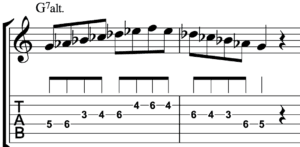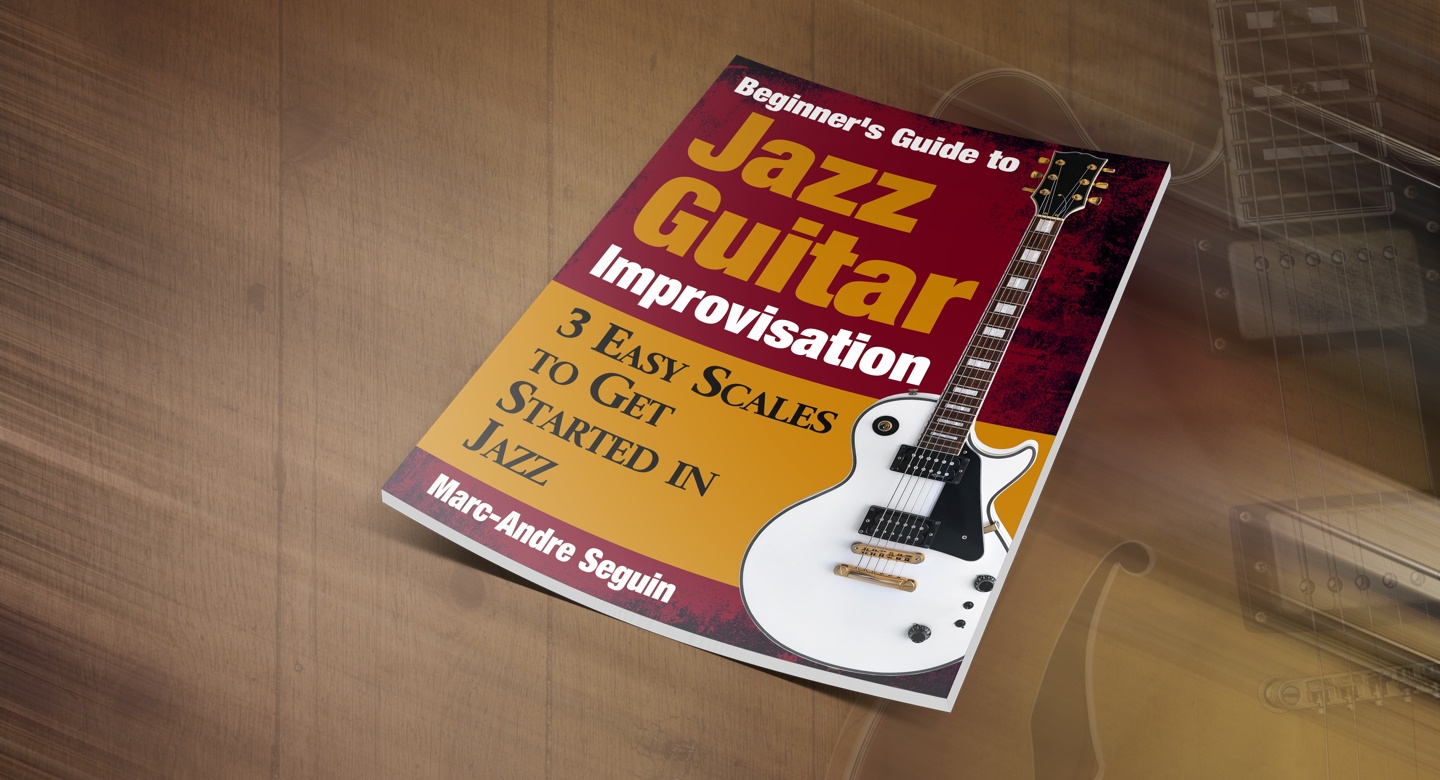
Jazz Improvisation Pillar #1: Define The Sandbox
Jan 23, 2017As you read in our last post, the first pillar of jazz improvisation consists of defining the sandbox. It may seem to be a no-brainer, but it is crucial to have a solid understanding of this principle. Your ultimate aim is to be able to play lines with 100% correct notes at the right moment and develop the ability to mentally switch chords.
That is a large pill to swallow, but don't worry, we've got you. ;-)
In this article, I will present you the first Pillar in depth with musical examples to help you gain mastery over its core concepts.
Ready? Go!
"Jazz Improvisation Pillar #1" Exercises on Tune Up PDF
Join our Community here.
The Tools
Here are the tools you will need to use to define your sandbox properly.
Scales, scales, scales...
Scales! You cannot escape them. You have to learn and practice scales. They are the most important devices for creating improvised musical lines. And, in fact, scales constitute the basis for the entire tonal musical system.
That being said, running scales up and down for many minutes can become boring. I suggest you practice scales specifically in the contexts of songs as soon as possible. Doing so will make you make you think of which scale to use at the right time. It is important to develop this skill if you want to master the first Pillar.
Also, see this Three most Used Scales post on the website.
Arpeggios
Arpeggios are scales with fewer notes! In other words, think of arpeggios as scales without the even notes (2-4-6). I always thought it was easier to learn arpeggios AFTER scales because it is easier to "cut things out".
So, with arpeggios, you are left with the "good notes" only. Meaning arpeggios contain only the notes contained in the basic chord, 1-3-5-7. You can't go wrong with those since they will always be correct no matter what. Also, see this position playing series about arpeggios here.
Scale Switching (Mentally)
This is not a tool per se, but this is what happens between the jazz player's ears (in his mind!) when the chord changes. Always keep this in mind while practicing and improvising: the scales jazz improvisers use "change" mentally. Forget about playing only one scale throughout your solo: jazz improvisation is, at its core, synonymous with outlining the chords properly with the improvised lines.
For example, have you ever listened to a jazz improviser and even if they didn't play the melody of the tune, you still knew what songs they were playing? That is what you are aiming for. The exercises below are great starting points for this.
Jazz Improvisation: Pillar #1 Exercises
The following exercises will help you define the sandbox (i.e. play accurate notes 100% of the time) in your improvisation. Practice them thoroughly and you will master the first Pillar in no time.
1 - Learn the Dorian, Mixolydian and Major Scales
How: Go up to the 7th only, then down back to the root. One fingering only! Go slow.
2 - Applying scales on the Dm7 – G7 – Cmaj7 progression (ii-V-I in C major)
How: Play D Dorian (minor) ascending and descending. Then G Mixolydian (dominant) ascending and descending. Then C major ascending and descending. That is all ;-)
Pro Tip: The chord lasts one bar? Play the scale from root to 7th only. The chord lasts 2 bars (or more)? Play the scale up to the 7th and back down. Zat sit!
3 - Play 4-note arpeggios on the ii-V-I progression in C major in quarter-notes
How: This is almost the same thing as the previous one. You just need to remove the non-chord tones and play in quarter notes. For example, your first bar will consist of the notes D-F-A-C. That's it!
4 - Outline scales on Bb Blues (PDF Step 5.b.)
You are lucky. The Blues form contains almost only dominant chord so you will (almost) have only "one scale" to think about ;-)
How: Just like the first exercise, play the scale up from the root to the 7th when the chord lasts one bar. While when the chord lasts two bars play up to the 7th and come back down.During the first 8 bars of the Bb Blues, going back down will occur at bar 4 (Bb) and bar 6 (Eb) only.
More Exercises
5 - Challenge yourself: Play the scales on a full progression
Try it over these, with your own fingerings.

6 - Do this on a standard chord progression
Pick any tune, play seven-note scales on the entire progression. Use only the Dorian, Mixolydian and Major scales.
7 - Addressing other types of scales (altered chords and more...)
Learning the Dorian, Mixolydian and Major scales will be enough to cover about 80-90% of the progressions you will encounter.
If you don't know which scale to use over an altered chord, you can always use the arpeggio ;-)
But what if I told you, you can address altered chords with different ideas? Let's say you have this progression: Dm7b5 - G7b9 - Cm. This is a plain minor II-V-I ... but scale choices aren't immediately obvious.
Here's an elegant yet simple solution:

How: To outline this progression you can start by going up the Bb Mixolydian scale and down to the third of G. This means when you're finished descending, you land on B natural instead of B flat. On the Cm bar, you can play a Cm bebop scale up and down (it's fun).
Theory: How can I explain this? Easy! Dm7b5 Locrian means Eb major which means Bb7 Mixolydian.
Side note: If you have an altered chord on its own, G7alt (a.k.a. G7#9#5 a.k.a. G7b5b9 etc.) for instance, use the Ab melodic minor starting on G. You will sound all altered notes AND the root.

8 - For advanced players: Playing "into the next chord"
This exercise consists of "making the changes" happen. The idea is simple: play the scale that corresponds to your current chord and when you have to switch chords, do not stop the musical line. Play the next available note for the next chord (scale) and continue in the same direction you were going.Here is an example to help you visualize the exercise:

Summary / Wrap Up
The basic steps to practice scales are:
- Pick a tune and learn exactly one scale for each chord.
- Play scales up and down through the tune “rubato” (no tempo).
- In strict tempo, play scales up (from degrees 1 to 7). This means you will always come back to the root of the next chord.
- When the chord lasts 2 bars, go up then down the scale in time.
The basic steps to practice arpeggios are:
- Do exactly the same thing you did with the scale but with arpeggios this time ;-)
In the 2nd Pillar article, we'll continue the discussion. We will visit the ideas behind the 7th exercise while still playing only "correct notes". You don't want to miss it ;-)
"Jazz Improvisation Pillar #1" Exercises on Tune Up PDF
Join our Community here.
Links:
Head over to the main article about the 3 Pillars Improvisation here:
Click here to read about Pillar #2
Click here to read about Pillar #3
Next, try your hand at some improv with our FREE lesson!
This guide will teach you the very basics of jazz improv covering subjects such as outlining the changes, hitting the right notes, and most importantly making music. We’ll cover the basics with you and take you through an actual jazz standard showing you how to play over it!










